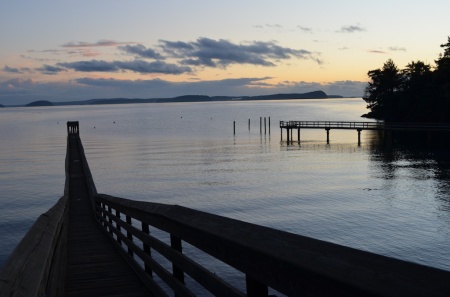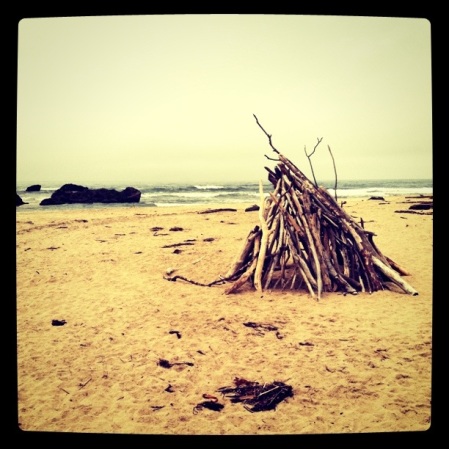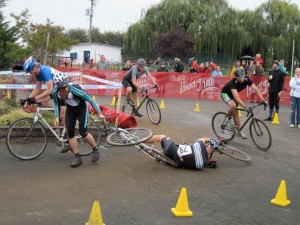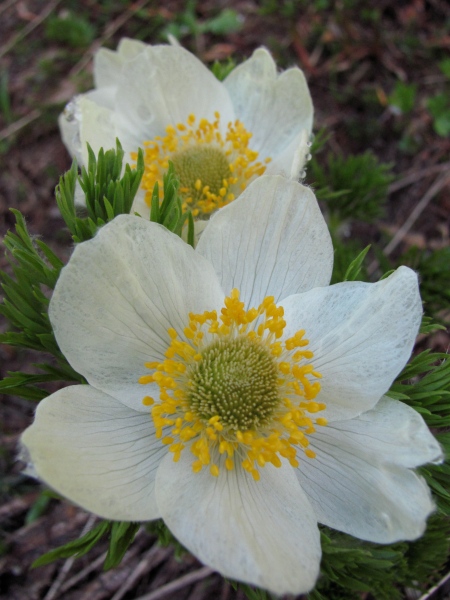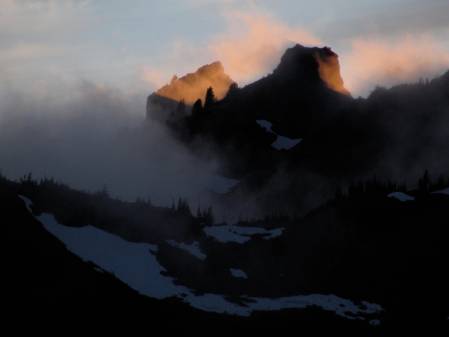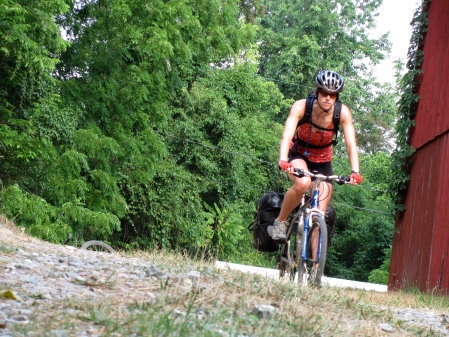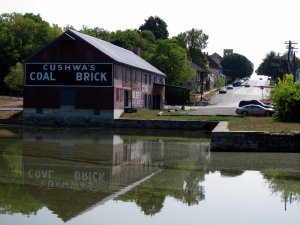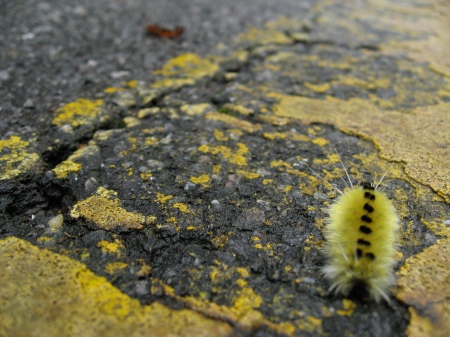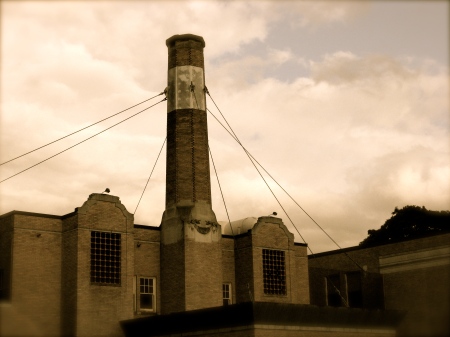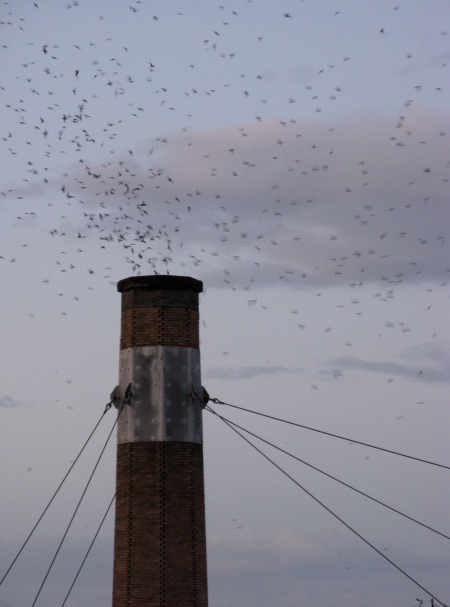Life is quiet on a San Juan island in the fall. I know this because my sister Laura and I just spent two days on Orcas, the largest island in the archipelago off the coast of Washington State. In the waterfront community of Eastsound where we stayed, “shut” signs excuse many shops from business, the streets were empty of people, the wind blew fiercely across the water, and the sun set by 4:45 p.m., driving us to our pajamas soon after. After months of running at full-steam, we welcomed the slowdown.
The ferry ride over
Here are some highlights of our trip:
- After a cold and rainy ferry ride to the island on Tuesday, we turned up the heat so high in our room at the Outlook Inn that we passed out from heat exhaustion. Laura did not wake up for 12 hours.
- After serving us coffee and pastries, the flannel-clad woman at the Wildflour Bakery burst out that we were “so tall” and then apologized, saying the 12-year-old in her could not resist commenting. We wanted her to be our friend.
- We ate burgers at the Lower Tavern, a dark, cinder-block building that seems the center of the town’s nightlife and offers microbrews, “the best burgers in town,” a pool table and a juke box that lights up in time to its own tunes (which seemed to be vintage video game soundtracks when left unattended).
- The Island Market, where we picked up crackers, cheese and double-chocolate Milanos to fill up after our overpriced salads at the Madrones Grill.
- We hiked up Mount Constitution (2,409 feet) in the 5,000-acre Moran State Park, skirting the edges of small mountain lakes, crossing fields strewn with dead ferns and moss-covered logs and passing through foreboding forests where fog surrounded the dark trunks of the trees. From the stone tower on top, we could see miles out across the water, to other finger-like San Juans, even over the border into Canada.
- We watched the sun set over the water from the end of a pier in Olga, on the eastern side of the horseshoe-shaped island.
- We visited the Crow Valley Pottery shop on Main Street, which sells Laura’s mugs. We were tempted to buy some but then remembered who we were.
- The wind was so fierce on Thursday that, during our morning run along the back roads, we had to lean forward 45 degrees to keep moving forward. Later in the day, I began to question my choice of dangly earrings.
- One last thing: let me recommend traveling with a Bota Box, a box o’ wine (Malbec, in our case) that’s actually pretty good. You save the glass it would take to produce four wine bottles and always have inexpensive but good wine on tap. Plus, it’s classy!
On a separate but semi-related note, I have decided to start memorizing poetry, a practice my grandfather felt important in life. My first project is Mary Oliver’s Wild Geese, which I feel is appropriate theme- and image-wise for our stay on the wild isle. Here it is, from memory:
You do not have to be good.
You do not have to walk on your knees
for a hundred miles through the desert, repenting.
You only have to let the soft animal of your body
love what it loves.
Tell me about despair, yours, and I will tell you mine.
Meanwhile the world goes on.
Meanwhile the sun and the clear pebbles of the rain
are moving across the landscapes,
over the prairies and the deep trees,
the mountains and the rivers.[That’s as far as I’ve gotten. Here’s the rest:]
Meanwhile the wild geese, high in the clean blue air,
are heading home again.
Whoever you are, no matter how lonely,
the world offers itself to your imagination,
calls to you like the wild geese, harsh and exciting–
over and over announcing your place
in the family of things.






